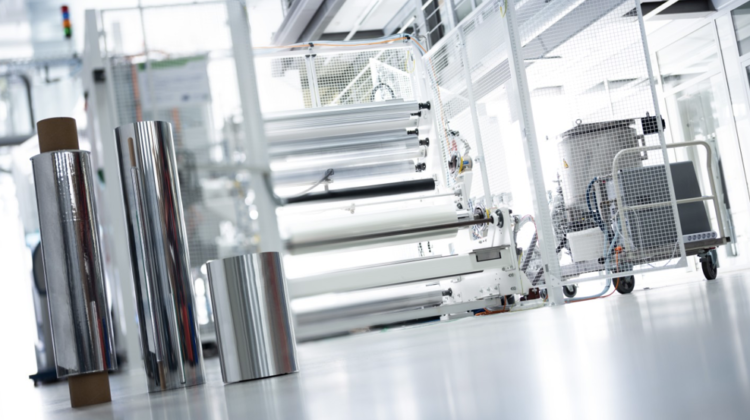
As part of the EU project PERSEUS, Fraunhofer FEP is developing new optically effective surface structures for perovskite solar cells. By using roll-to-roll nanoimprint lithography (NIL), reflection losses are minimized, and efficiency of solar cells increased. In the Design-PV project, decorative surfaces for facade-integrated photovoltaic modules are developed using NIL. The versatile NIL technology also offers application possibilities in areas such as anti-fouling, anti-reflective coatings, and medical engineering.
Fraunhofer FEP will provide insights into the progress and possibilities of the new process technology during ICE Europe 2025, set for March 11-13 at the Munich Trade Fair Centre in Hall A5, Stand 1720.
Building-integrated photovoltaics (BIPV) combine sustainable energy generation with modern building design. It allows solar modules to be seamlessly integrated into facades, but until now, it has compromised the architectural appearance. In the project Design-PV (funded by the German Federal Ministry of Economic Affairs and Climate Action BMWK, aesthetically pleasing solutions are being developed that invisibly combine PV-active facade areas with non-active surfaces. Together with five other partners, Fraunhofer FEP is developing tactile surfaces produced using roll-to-roll nanoimprint lithography (R2R-NIL).
In addition to the aesthetic aspects of solar modules, the focus of new technologies is on increasing efficiency and reducing reflection losses. The EU-funded research project PERSEUS, which started in January 2025, aims to develop innovative methods to improve the performance of perovskite solar cells. A key focus is on optically effective surface structures to minimize reflection losses and increase the efficiency of solar cells. Fraunhofer FEP is working on the cost-effective production of such structures using R2R-NIL technology, which will be integrated into photovoltaic modules for indoor and outdoor applications in collaboration with 16 partners.
NIL is used to fabricate surface topographies on polymer films with feature sizes ranging from a few 100 nanometres across a few micrometers to the millimeter range in a roll-to-roll process. This enables large-scale, continuous production of the films. A structured master roller is pressed into a liquid coating, while the coating is simultaneously cured. Cross-linking the lacquer using electron beams allows for fast and efficient curing of the structures and offers the flexibility to integrate various pigments or particles into the lacquer. The process is carried out on a web width of up to 1,250 mm and a process speed of several tens of meters/min, thus guaranteeing high productivity.
“With roll-to-roll nanoimprint lithography, completely new possibilities are opening up for the production of tactile and optically effective surfaces. This technology will enable us to significantly reduce reflection losses in perovskite solar cells and further increase their efficiency,” explains Dr. Steffen Günther, group leader at Fraunhofer FEP. “The challenge is to make the process stable over the long term. To achieve this, we are optimizing the coatings used in terms of moldability and beam curing.”
In addition to optical or photovoltaic applications, the technology has many other potential uses. Flexible materials often require a specific surface topography, which can be easily and cost-effectively achieved through NIL imprinting. Target applications for films equipped in this way include lab-on-chip structures, the reduction of biofouling in the maritime sector, the improvement of flow properties in wind turbines and container ships, and the reduction of reflections on windows. Battery electrodes can also benefit from a structured substrate in terms of cycle stability and capacity.
Fraunhofer FEP has extensive expertise in coating flexible substrates such as films. With its in-house roll-to-roll system, atmoFlex, (above), it is also capable of performing coatings under atmospheric conditions, which enables additional efficiency advantages and cost savings in production.

